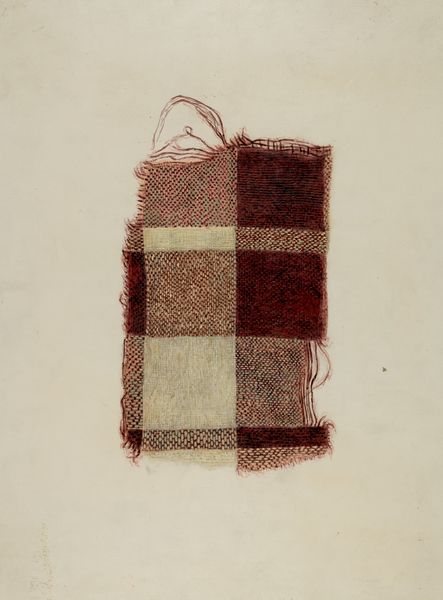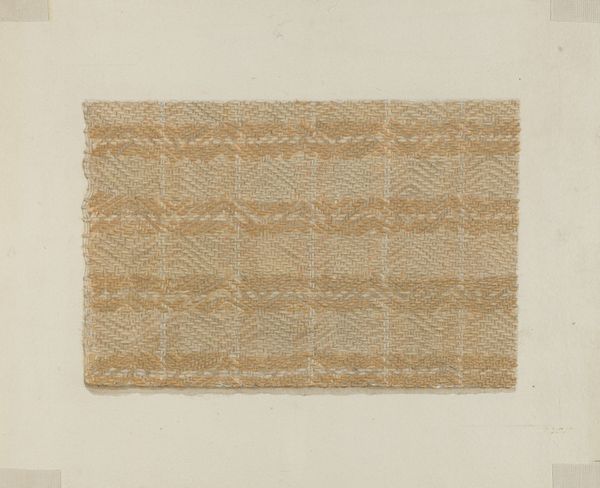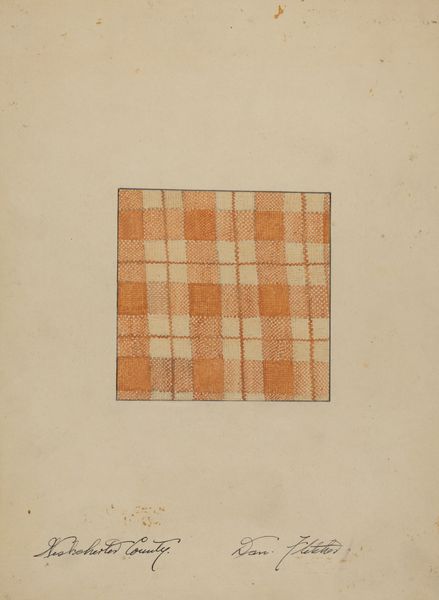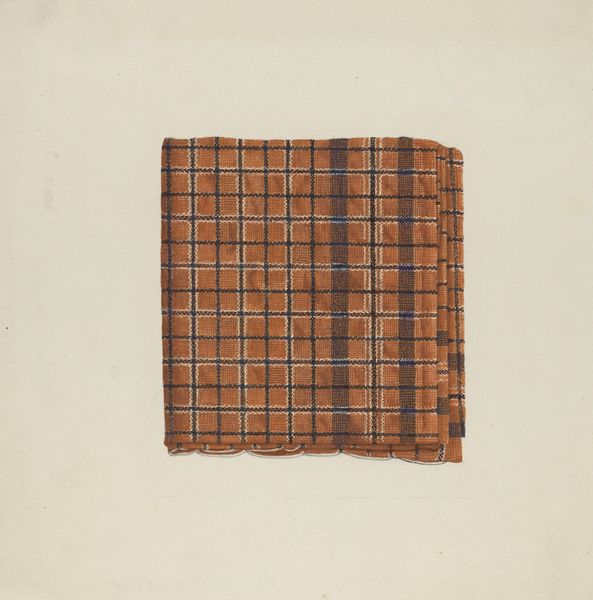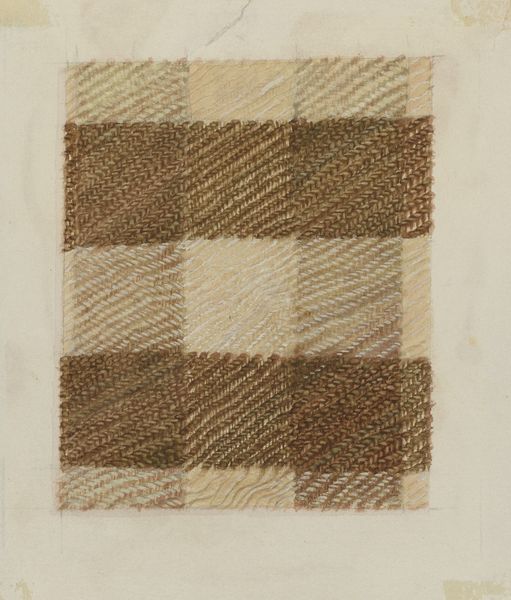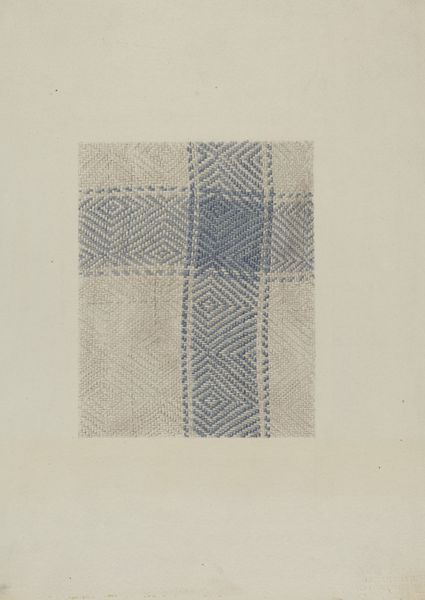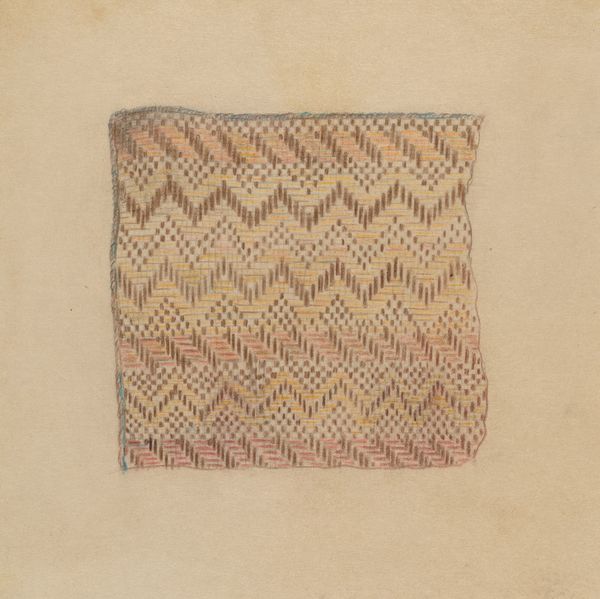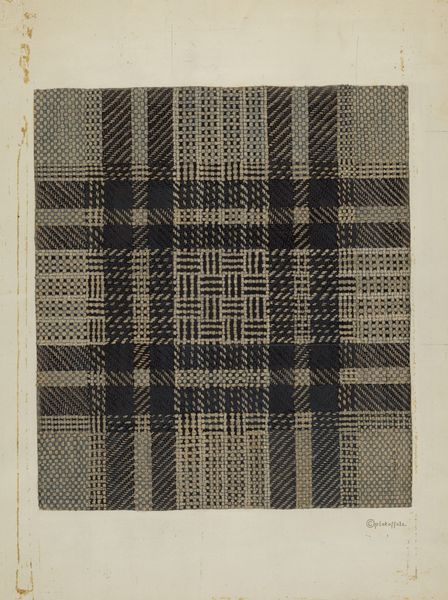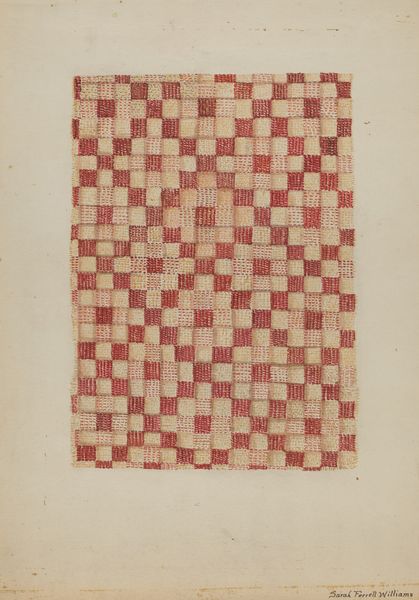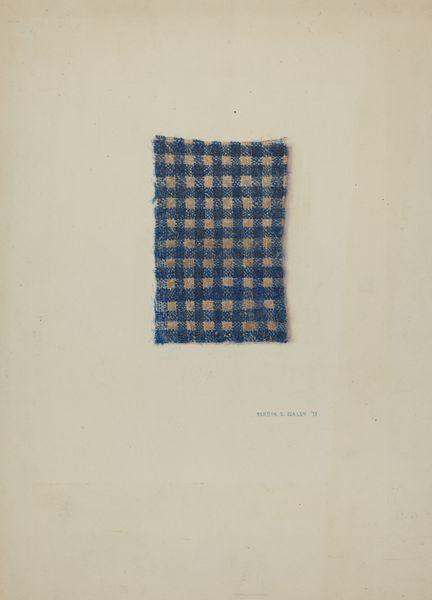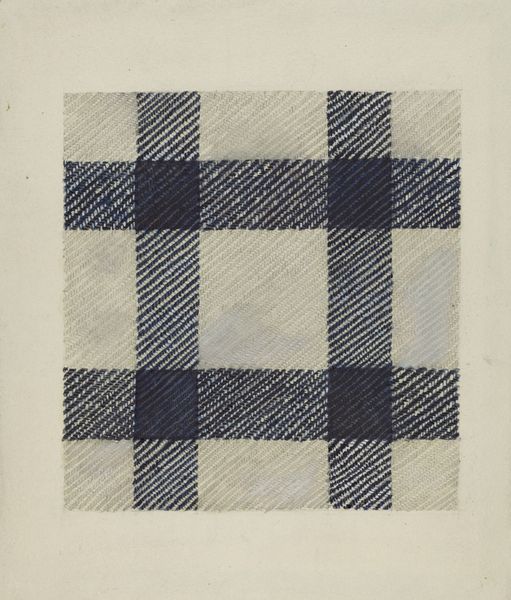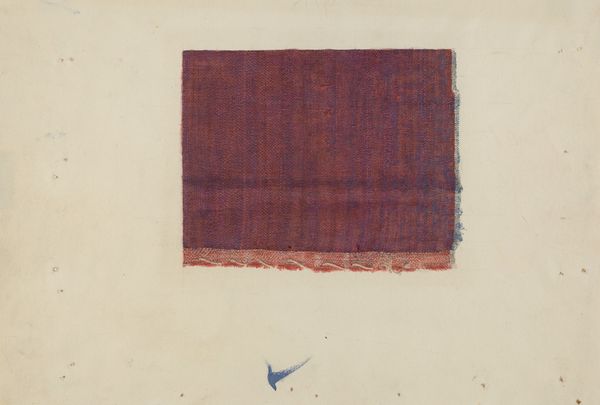
drawing, mixed-media, textile, paper
#
drawing
#
mixed-media
#
textile
#
paper
#
abstraction
#
watercolor
Dimensions: overall: 25 x 22 cm (9 13/16 x 8 11/16 in.)
Copyright: National Gallery of Art: CC0 1.0
Curator: So, here we have "Shaker Linen," a mixed-media piece, including drawing and textile, on paper. It’s dated sometime between 1935 and 1942, by George Constantine. Editor: Immediately, it’s just…warm. Not only is there this lovely, faded russet color in the grid, but the little inconsistencies in the drawing soften it too. Curator: The use of the Shaker textile relates to the movement's ideals of simplicity and utility. Shaker designs avoided ornamentation, favoring functionality and durability. This artwork is interesting, though, as it brings something of the fine art tradition to a common material object. Editor: I can see that! The linen itself looks deliberately imperfect, almost mimicking the warp and weft. It makes me wonder if he saw the drawing as a form of, perhaps, immortalizing a disappearing craft. Was this a world that already felt threatened to him, or romanticized perhaps? Curator: It's difficult to say definitively, but it's true that the Shaker communities were in decline during this period. Artists and designers of the time, though, were increasingly looking to folk art for authentic modes of expression beyond the classical Western canon. There was a kind of utopian ideal for these crafts. Editor: Utopian indeed. It is so… humble, really, a celebration of quiet industry and practical beauty. It's compelling that it brings this all together, this sense of both documentation and idealization. I love that tension. Curator: Me too. By focusing on Shaker craftsmanship, it perhaps suggests an alternate approach to progress—one rooted in community, integrity, and sustainable practices. Even for today's audiences, "Shaker Linen" serves as a powerful statement about alternative ways of life. Editor: And the abstraction somehow allows us to read anything we want into it. I imagine a well-worn blanket, soft and comforting, a family treasure passed down through generations…but I suppose it also encourages reflections about the industrialization of textile production? So fascinating. Curator: Exactly! It reflects this search for values, but also can evoke the nostalgia of modernism as an art form in general, a celebration and a melancholic longing. Editor: A quiet revolution, then, stitched into paper.
Comments
No comments
Be the first to comment and join the conversation on the ultimate creative platform.
